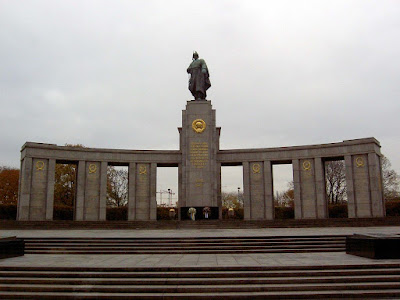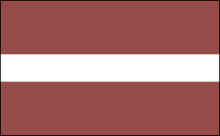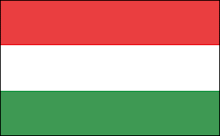
 Wyświetl większą mapę
Wyświetl większą mapęPodobnie jak inne duże miasta, tak i Berlin musiałem podzielić na kilka części. Niestety dzień nie był słoneczny i ładny, więc może nie wygląda to oszałamiająco. Berlin jest ciekawy, ale nie powalił mnie na kolana...
Like other cities, I had to divide Berlin into some parts. Unfortunately the day wasn't sunny or hot, so it doesn't look overwhelming. Besides, Berlin is interesting, but I'm not a fan of it...
Marienkirche
Powstał w 1280-1300, ale obecny wygląd kościół uzyskał w 1789-90 wg proj. Carla Langhansa. Kościół ma bogate wyposażenie wnętrza.
Marienkirche It was built in 1280-1300, but today's appeareance the church got in 1789-90 designed by Carl Langhaus. The interior is very rich.
Ratusz - Rotes Rathaus
Powstał w 1861-9 wg proj. Hermana Friedricha Waesemana. Po wojnie była to siedziba władz Berlina Zachodniego.
Red Townhall Built in 1861-9 designed by Herman Friedrich Waeseman. After the war it was a house of the government of Western Berlin.
Wieża Telewizyjna - Fernsehturm.
Powstała w 1965-9 wg proj, Fritza Dietera i Gunthera Franke. Wieża ma 368 metrów, ale taras widokowy miesci się na 203 metrze.
TV Tower Built in 1965-9 designed by Fritz Dieter and Gunther Franke. It's 368 meters high but the view terrace is on the 203 metre. 
Fontanna Neptuna
Powstała w 1886 wykonana przez Reiholda Begasa.
Neptune's FountainMade in 1886 by Reinhold Begas.
Berliner Dom
Olbrzymia katedra powstała w 1747-50 wg proj. Georga Wenzeslaua von Knobelsdorffa, przebudowana do stanu dzisiejszego na pocz. XX w. Mieszczą się tu sarkofagi Fryderyka I i żony.
Berliner DomThis huge cathedral was built in 1747-50 and was designed by Georg Wenzeslau von Knobelsdorff and remade at the beginning of XX c. There are sarcophags of Frideric I and his wife.
Altes Museum
Jest to pierwsze berlińskie muzeum publiczne, zbudowane w 1824-8 wg proj. Karla Schinkla. Mieszczą sie tu zbiory rzeźb i ceramiki antycznej.
Older MuseumThe first public museum in Berlin, built in 1824-8 by Karl Schinkel. There are ancient sculptures.
Palast der Republik
Powstał w 1976 jako pałac kultury, mieścił restauracje, dyskoteki, teatry. Wprawdzie w 1990 zamknięto go, bo przekroczono normy azbestu, ale po remoncie powrócił do użytku.
Palace of the RepublicIt was build as a palace of culture, there were restaurants, discos and theatres inside. In 1990 it was closed because there was too much asbestos used in the building, but the public voice demanded reopening, so they redecorated this ugly buliding and now it's still open.


Zeughaus - Muzeum Historii Niemiec
Zeughaus - Museum of German's History
Neue Wache
Miejsce pamięci ofiarom dyktatur i wojen, mieści się tu od 1993.
Neue WacheA place of maintaining the victims of totalitaries and wars, opened in 1993.
Opera Miejska
Powstała w 1741-3, przebudowana po pożarze w 1843-4 wg proj. Carla Langhausa. Wystepowali tu najsłynniejsi śpiewacy świata, a dyrygentem był Richard Strauss.
City OperaBuilt in 1741-3, rebuild after the fire in 1843-4 according to the design of Carl Langhaus. The most famous singers were performing here and Richard Strauss was the conductor here.
Uniwersytet Humboldta
Założony w 1810 z inicjatywy Wilhelma Humboldta w pałacu z 1748-53, należącym do księcia Henryka Pruskiego. Studiowali tu m.in. Engels, Marks...
Humboldt UniversityFounded in 1810 by Wilhelm Humboldt in the Henryk the Pruss palace from 1748-53. Engels and Marks among the others studied here...

Biblioteka Państwowa
Budynek z 1903-14.
National LibraryBuilding from 1903-14.

Brama Brandenburska
Powstała w 1789-91 wg proj. Carla Langhausa. Napoleon zabrał wprawdzie bramę do Paryża, ale powróciła ona na swoje miejsce. To od bramy zaczął padać Mur Berliński.
Brandenburg GateRaised in 1789-91 and designed by Carl Langhaus. Napoleon took the gate to Paris but it came back here. The Berlin wall started to fall from here.

Reichstag
Powstał w 1884-94 wg proj. Paula Wallota na potrzeby świeżo otworzonego parlamentu cesarstwa Niemiec. Tutaj w 1918 proklamowano powstanie Republiki Weimarskiej. W 1933 budynek spłonął. Po wojnie nie tylko obradował tu parlament, ale odbywały się również koncerty. W 1990 odbył się pierwszy zjazd rządu zjednoczonych Niemiec. W 1995-9 budynek przebudowano wg proj. Normana Fostera.
ReichstagBuilt in 1884-94 designed by Paul Wallot for the freshly opened German Parlament. In 1918 they proclaimed Weimar Republic here. In 1933 the building burned down. After the war there was a parlament here, but also the concerts and other events were organised. In 1990 there was the first meeting of united Germany's government. In 1995-9 Reichstag was rebuilt by Norman Foster. 



Widok na Bramę Brandenburską z dachu.
A view on Brandenburg Gate from the roof of Reichstag.
Wnętrze kopuły
Interior of the dome.
Mauzoleum Żołnierzy Radzieckich
Odsłonięty w 1945 dla upamiętnienia żołnierzy radzieckich, którzy w liczbie ok. 20.000 zginęli w walkach o Berlin. Pomnik wykonali Mikołaj Siergiejewski i Lew Kerbel. Spoczywa tu ok. 2500 poległych.
A Monument of Soviet Soldiers.Shown in 1945 to remember the soviet soldiers, who died during the fights around Berlin in the number of 20.000. The monument was made by Nicolai Siergieev and Lev Kerbel. There are about 2.500 Russian soldiers buried here.



Pałac Bellevue
Rezydencja Prezydenta Niemiec powstała w 1785-6 wg proj. Phillipa Boumana dla księcia pruskiego Augusta Ferdynanda. W latach '30 XX w. był to budynek reprezentacyjny i gościnny rządu, obecnie służy za pałac prezydencki.
Bellevue PalaceThe residence of German President was built in 1785-6 designed by Phillip Bouman, for the Prussian prince August Ferdinand. In the '30s it was a representative and host building for German government, now it's home of the President.
Kolumna Zwycięstwa
Wykonał ją w 1864 Johann Heinrich Strack dla uczczenia zwycięstwa Niemiec nad Danią. Do 1938 pomnik stał przed Reichstagiem, potem przeniesiono go na ulicę 17 Lipca.
The Column VictoryIt was made by Johann Heinrich Strack in 1864 to glorify the victory over Denmark. Till 1938 it was standing near Reichstag, then it was moved to 17th July Street.
Urządzenie do wzywania Straży Pożarnej
A special stand to call firefighters.


 Kościół ewangelicki
Kościół ewangelicki

 Rynek
Rynek








 Nowy Ratusz
Nowy Ratusz Stary Ratusz
Stary Ratusz W oddali Muzeum Szkła i Biżuterii
W oddali Muzeum Szkła i Biżuterii Kościół św. Anny
Kościół św. Anny

 W tym pięknym budynku jest schronisko nmłodzieżowe.
W tym pięknym budynku jest schronisko nmłodzieżowe. Rzeźba w parku
Rzeźba w parku Pomnik poświęcony ofiarom I wojny
Pomnik poświęcony ofiarom I wojny

 Panorama miasta
Panorama miasta



















































